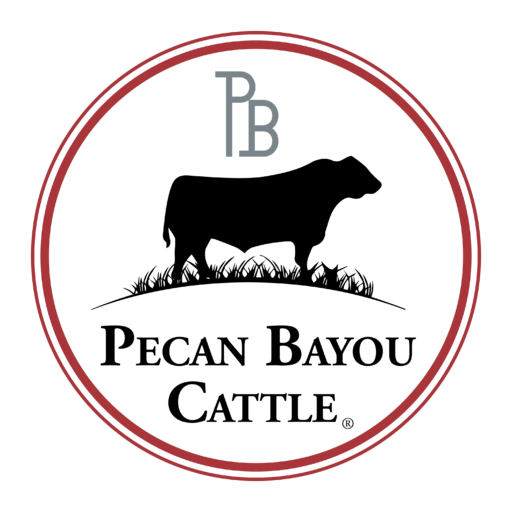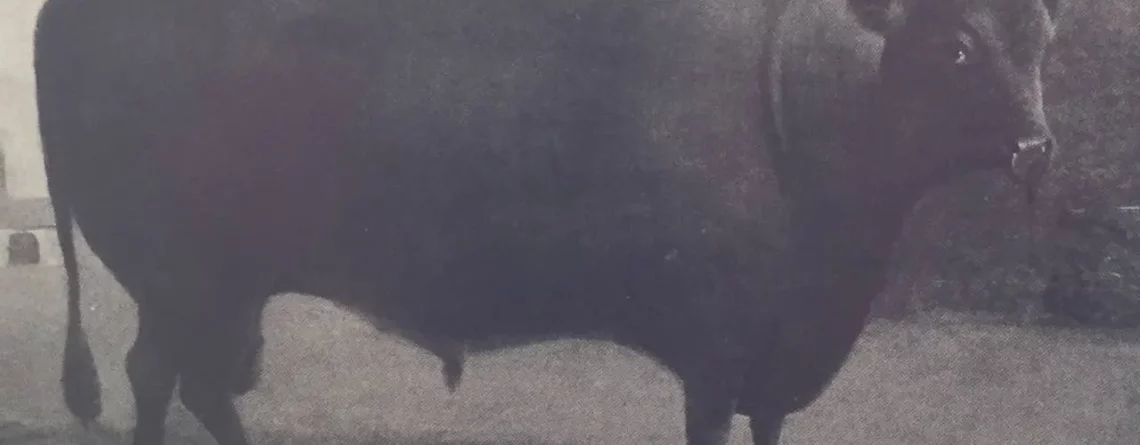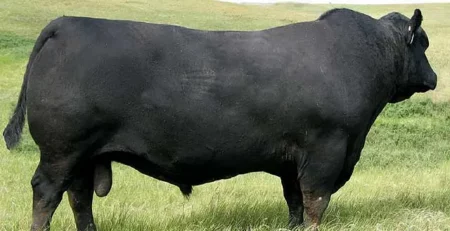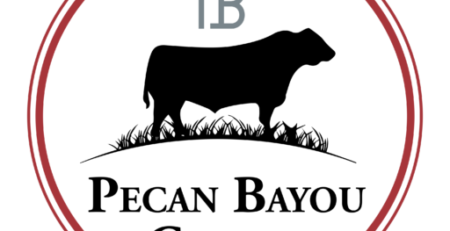Most Aberdeen Angus bulls trace back to Old Jock, a bull from Scotland in the mid-1800s and old cow, Old Granny. Over time these some of these cattle were polled meaning “without horns.” Their offspring were exported to the United States into Kansas in 1873, as well as into Argentina, New Zealand and Australia. Angus cattle are either black or red, with red being recessive. In the United States there are two separate breed associations (black angus – American Angus Association) and red angus (American Red Angus Association). However, in most other countries, the breed has one registration association for black and red angus.
If a bull has two genes for a black coat, he will pass down to his offspring to have a black coat. This is called homozygous black. If a bull is red, this means he has two genes for a red coat, and he is homozygous red. He will pass down a red coat gene to his offspring. If an animal is heterozygous for a black coat, that means it is a black animal that carries one red coat gene and one black coat gene. This bull could sire black or red calves, depending on whether he is bred to red or black coated females that are either homozygous black or heterozygous black. Because black is dominant, the only way a calf will be red from black-coated cattle is if they received two red genes, a recessive gene from each parent.
In the United States, some breeders breed red and black angus together. Although they are the same breed, their bloodlines will likely be separated with not many common ancestors. This is a way to get some additional vigor, like when you have an F1 Cross. Angus crosses are wildly popular because they add fertility, carcass quality, and gentleness to the mix. Crossing Angus with Herford to make black Baldies, or Simmental to make SimAngus is also popular in some cattle operations.
Crossing Angus with Brahmas to create Brangus is very popular due to the hybrid vigor crossing Bos Taurus (Angus) with Bos Indicus (Brahman). These cattle do will in hot, dry areas. We have added a few Senepol, a red short coated breed of Bos Taurus developed in the Caribbean Islands that incorporates good traits for heat tolerance, insect resistance, and high meat quality. The cross is called Senegus.
Crossbreeding two purebred lines of cattle creates what is called an F-1 Cross. The F1 Cross has hybrid vigor. This means the offspring will have a great boost from the two bloodlines that will make the animal superior in health, fertility, size, longevity based on the mating. When you have a herd of F1 Cross heifers and bulls they will almost always outperform their parents. This is why rotating bulls based on breed, or having two different purebred bulls will boost the productivity of the calf crop.
Linebreeding has been used by some breeders to lock in the traits of certain cattle. For example, linebreeding for easy fleshing, feed efficiency on grassland, maternal traits, fertility, gentleness, and carcass quality has been used to increase the predictability and performance of the offspring. We have done intensive research for the breeders best known for producing these traits, and incorporated a few of their linebred bloodlines to mix with others. We have also used some bloodlines from New Zealand, and from closed herds in the United States to create great outcrosses. An outcross is a bull or cow from within a breed, who is not closely related to others. This leads to genetic variety.
We use crossbreeding, outcrosses and a few linebred bloodlines in our breeding program to boost productivity and performance. We breed based on how the cattle look and perform in our environment in Central Texas, which is dry and mostly native and improved grasses. We use the bloodlines to stand on the shoulders of the great angus breeders of the past, and take what they have done, to enhance the cattle for the next generation. That’s what makes Angus a great breed, their adaptability and performance in a variety of conditions.



